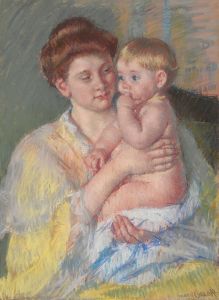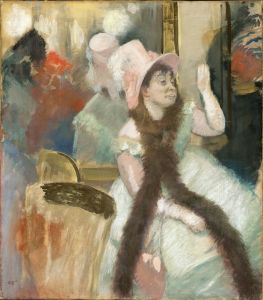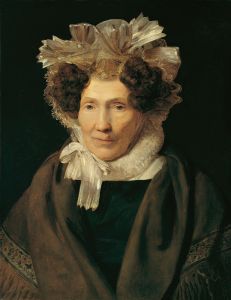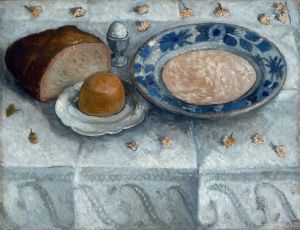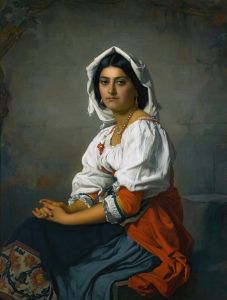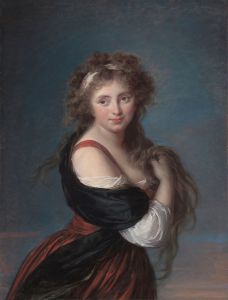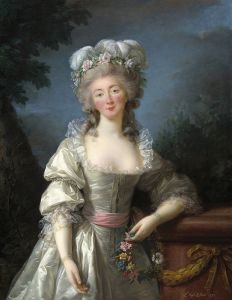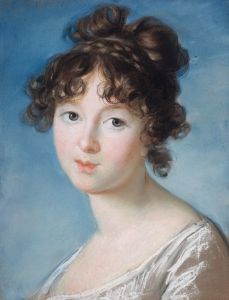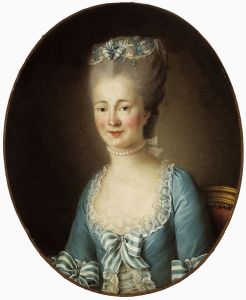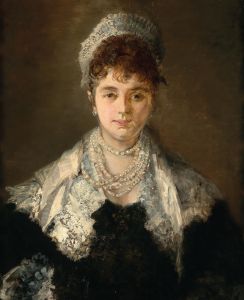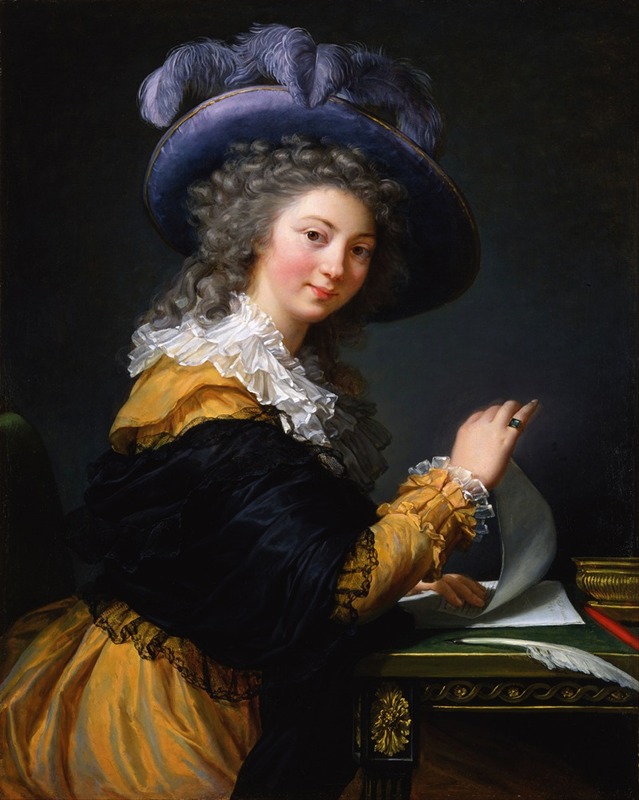
Comtesse de Cérès Former title - Lady Folding a Letter
A hand-painted replica of Elisabeth Louise Vigée Le Brun’s masterpiece Comtesse de Cérès Former title - Lady Folding a Letter, meticulously crafted by professional artists to capture the true essence of the original. Each piece is created with museum-quality canvas and rare mineral pigments, carefully painted by experienced artists with delicate brushstrokes and rich, layered colors to perfectly recreate the texture of the original artwork. Unlike machine-printed reproductions, this hand-painted version brings the painting to life, infused with the artist’s emotions and skill in every stroke. Whether for personal collection or home decoration, it instantly elevates the artistic atmosphere of any space.
Elisabeth Louise Vigée Le Brun, one of the most prominent portrait painters of the 18th century, created the painting "Comtesse de Cérès," which was formerly known as "Lady Folding a Letter." Born in Paris in 1755, Vigée Le Brun was a highly skilled artist whose work was celebrated for its elegance, grace, and attention to detail. She became a favorite portraitist of Queen Marie Antoinette and the French aristocracy, which significantly boosted her career.
The painting "Comtesse de Cérès" is a fine example of Vigée Le Brun's talent in capturing the beauty and personality of her sitters. The subject of the painting, the Comtesse de Cérès, is depicted in a moment of quiet reflection, folding a letter. This intimate and personal portrayal is characteristic of Vigée Le Brun's style, which often sought to reveal the inner life and emotions of her subjects.
In the painting, the Comtesse is dressed in elegant attire typical of the late 18th century, with delicate lace and rich fabrics that showcase her status and refinement. The use of light and shadow in the painting highlights the textures of the materials and the softness of her skin, adding to the lifelike quality of the portrait. Vigée Le Brun's skillful use of color and composition draws the viewer's attention to the Comtesse's serene expression and the delicate action of folding the letter, suggesting a narrative or a moment of contemplation.
Elisabeth Louise Vigée Le Brun's ability to capture the essence of her subjects made her one of the most sought-after portraitists of her time. Her work not only provides a glimpse into the fashion and aesthetics of the 18th-century French aristocracy but also offers insight into the personalities and lives of the individuals she painted. The painting "Comtesse de Cérès" is a testament to her artistic prowess and her ability to convey both the external beauty and the inner character of her sitters.
Throughout her career, Vigée Le Brun painted numerous portraits of notable figures, including members of the royal family, nobility, and influential individuals of her era. Her work was highly regarded, and she was admitted to the Académie Royale de Peinture et de Sculpture in 1783, a significant achievement for a female artist at the time.
The painting "Comtesse de Cérès" remains an important work in Vigée Le Brun's oeuvre, reflecting her mastery of portraiture and her contribution to the art of the 18th century. Today, her paintings are held in high esteem and can be found in major art collections and museums around the world, continuing to be admired for their beauty, technical skill, and historical significance.





